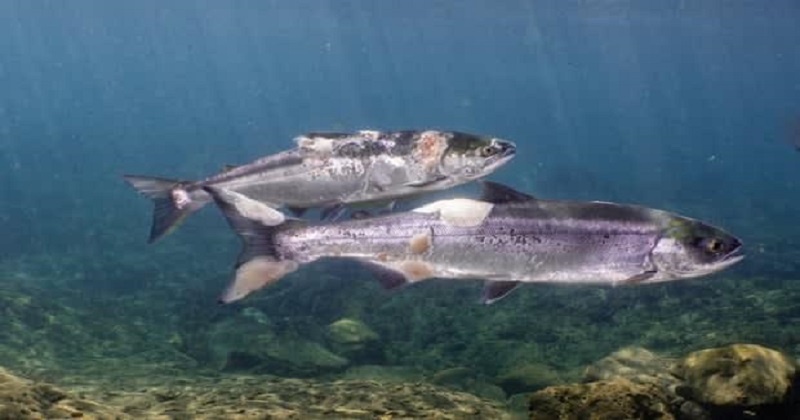
Sockeye salmon fishes with fuzzy-looking white spots on their bodies can be seen in a distressing video uploaded by the nature protection group Columbia Riverkeeper.
The white patches, according to the organization, are the consequence of a fungal infection brought on by stress from the current heatwave.
Unfortunately, the fish in issue, the Snake River sockeye salmon, has been classified as an Endangered Species and is on the verge of extinction. They were placed on the federal endangered species list in 1991.
The heatwave that Canada and the United States have been experiencing in recent days is thought to be the cause of this extreme heating of water.
However, the NGO claims that the dams on the Columbia and Snake rivers are partly to blame, in addition to the heatwave. They claim that dams on the Columbia and Lower Snake rivers produce enormous, stagnant lakes that trap the sun’s energy, making the water too hot for salmon to survive.
The Northwest Tribal Salmon Alliance’s Don Sampson refers to it as a ‘salmon crisis.’ Sampson adds in another video released by the environmental group while asking for Congress to act, that ‘the sockeye here is dying. They are suffocating. You can see they are in lethally hot water.’
Current water temperatures on the Columbia River are 71 degrees Fahrenheit, much over the permitted limit of 68 degrees F. Scientists set this limit to protect salmon from unsafe temperatures.
The salmon are dying. They’re suffering and suffocating in hot water created by dams.
But we can stop this. We can remove the lower four Snake River Dams and restore cool, clean water.
Share this video, sign the petition, save the salmon.https://t.co/qP2qsplWxS pic.twitter.com/cRUck3cQ48
— Columbia Riverkeeper (@ColumbiaRKeeper) July 27, 2021
Previous research discovered that eight main dams in the Columbia Basin have a significant impact on salmon temperature and flow. Salmon use the Columbia River as a migratory route, travelling upwards to spawn in mountain lakes in the Okanogan, Yakima and Snake River systems before returning downstream.
Since the completion of the Lower Snake River dams in the 1970s, 13 species of salmon and steelhead have been designated as vulnerable under the Endangered Species Act, according to the National Wildlife Federation.
Earlier in 2015, nearly 250,000 fish died in the Columbia and Snake rivers due to hot water, as per a news release from Columbia Riverkeepers. The Little White Salmon River and its tributaries became a haven for many of those fish.
Also Read: 1972 study prediction of human society’s collapse may come true: New research
If dams and climate change continue to warm rivers, researchers expect that this sort of fish death will become more prevalent. If the problem isn’t solved soon, the sockeye will most likely go extinct.
Several fishing groups, tribal nations and environmental organizations are urging the Pacific Northwest congressional delegation to breach the four lower Snake River dams to safeguard sockeye salmon.

Post Your Comments